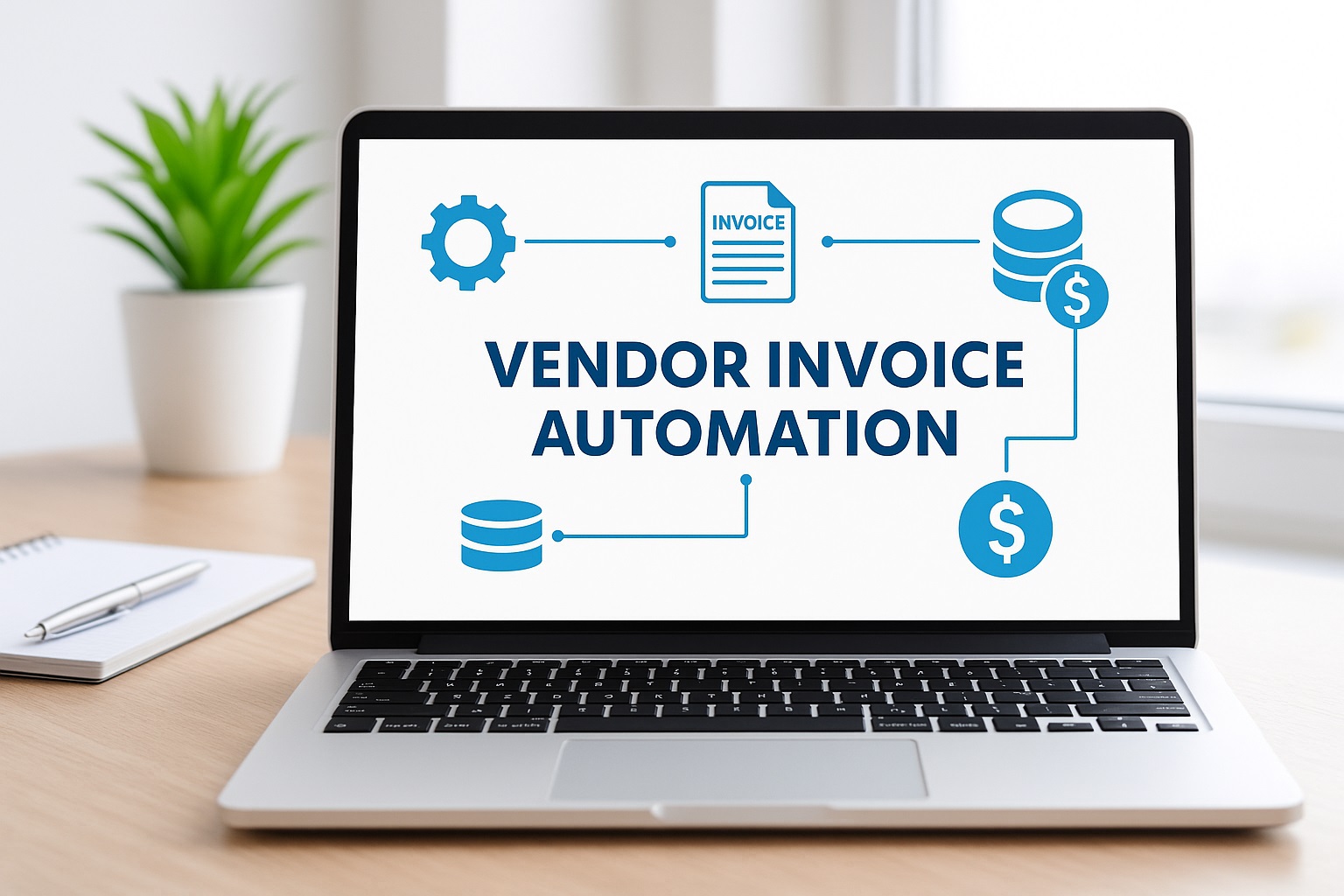Vendor Invoice Automation (Invoice Capture) with Microsoft Power Platform
Managing vendor invoices manually takes time, causes errors, and creates unnecessary costs. As companies grow, handling invoices from email, EDI, or paper can overwhelm accounts payable teams. But what if there was a way to cut down the manual effort, reduce mistakes, and speed up approvals all at once?
That’s where Vendor Invoice Automation (VIA) comes in. It uses AI and workflows to capture invoice data, validate it, and send it straight into your ERP for posting and payment. This article walks you step by step through setting up vendor invoice automation using AI Builder and Power Automate in Microsoft Power Platform. Screenshots are included at every stage for clarity.
What Is Vendor Invoice Automation?
Vendor Invoice Automation is the use of technology to receive, process, and approve vendor invoices without manual effort. Instead of relying on staff to key in invoice details, the system automatically captures data using tools like OCR and AI, validates it against existing purchase orders, and routes it for approval. Once approved, the invoice is posted in the ERP system for payment.
In simple terms, it replaces paper-heavy and time-consuming invoice handling with a streamlined, digital process. By doing so, businesses save time, reduce errors, cut costs, and ensure vendors are paid on time. It turns what was once a repetitive and error-prone task into a smooth, transparent, and scalable workflow.
Why Vendor Invoice Automation Matters
Vendor invoice automation offers clear advantages:
- Faster processing – Invoices are captured and approved quickly without manual entry.
- Error reduction – OCR and AI validation reduce mismatches and duplicate entries.
- Lower cost – Cuts down administrative expenses tied to manual invoice handling.
- Better visibility – Finance teams see payables and liabilities in real-time.
- Audit-ready – Creates a full audit trail for compliance.
- Improved vendor relations – Ensures payments are accurate and on time.
- Scalable – Handles growing invoice volumes without needing more staff.
How the Automation Works
- Capture invoices from multiple channels (email, EDI, scanned PDFs).
- Extract and validate data (invoice number, vendor ID, date, amount) against POs/contracts.
- Route for approvals automatically, based on business rules.
- Post to ERP (Dynamics 365 F&O) and schedule payment.
Step-by-Step Setup Guide
Follow these steps to configure invoice capture using Microsoft Power Platform.
Step 1: Sign in to Power Apps
Go to make.powerapps.com and sign in.

Step 2: Choose AI Builder Model
Select AI Builder → Extract information from invoices.

Step 3: Create a Custom Model
Click Create custom model.

And then choose Invoices.

Step 4: Define Fields
Add header and line fields such as vendor number, invoice number, amount, date, item, and quantity.

Step 5: Upload Sample Invoices
Upload at least 5 sample invoices for AI training.

Step 6: Map Fields and Train
Map your created fields to the invoice data. Train the AI model until it recognizes invoice details accurately.

You can see your AI model is getting trained.

Step 7: Open Power Automate
Go to make.powerautomate.com.

Step 8: Connect Outlook

Sign in with your Outlook credentials.
Step 9: Add Trigger
Set up the trigger: When a new email arrives (V3). Configure it to detect invoices from your vendor mailbox.

Step 10: Handle Attachments
Add an action to loop through attachments (Apply to each) and extract invoice PDFs.

Step 11: Extract Invoice Data
Add AI Builder → Extract information from invoices. Pass the Content Bytes from attachments to the model.

Step 12: Map Invoice Lines
Map fields for invoice line items in the flow.

Step 13: Test the Flow
Run a test to make sure invoices are processed correctly.

Check if the invoice number was extracted correctly from the PDF.
Step 14: Post to ERP
Confirm the record is created in Dynamics 365 Finance & Operations.

I hope this end-to-end process helps you understand all about invoice capture.
Best Practices
- Train your AI model with invoices from multiple vendors for better accuracy.
- Add PO matching and tolerance checks before posting.
- Keep strict security controls and access rules for compliance.
- Continuously monitor and optimize flows as invoice volumes grow.
Conclusion
Vendor Invoice Automation transforms accounts payable from a manual, error-prone process into a fast, reliable system. With Microsoft Power Platform, you can capture invoices from email, extract and validate data with AI, route approvals, and post directly into Dynamics 365 F&O.
The result is lower costs, fewer delays, better cash flow, and improved relationships with vendors. Once set up, this automation scales easily as your business grows. So the real question is: are you ready to let automation handle your invoices while your team focuses on strategy and growth?
![]()

